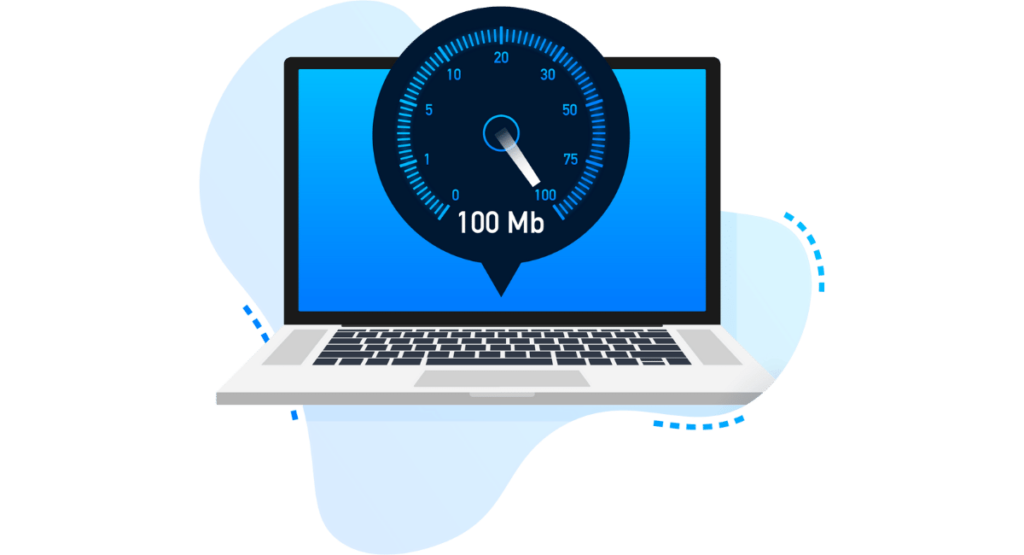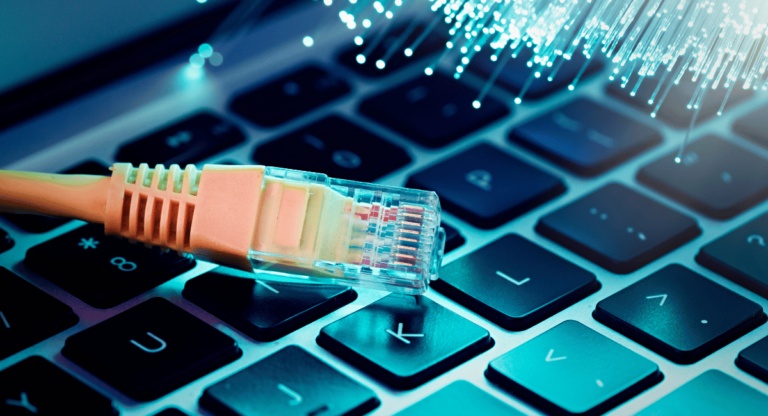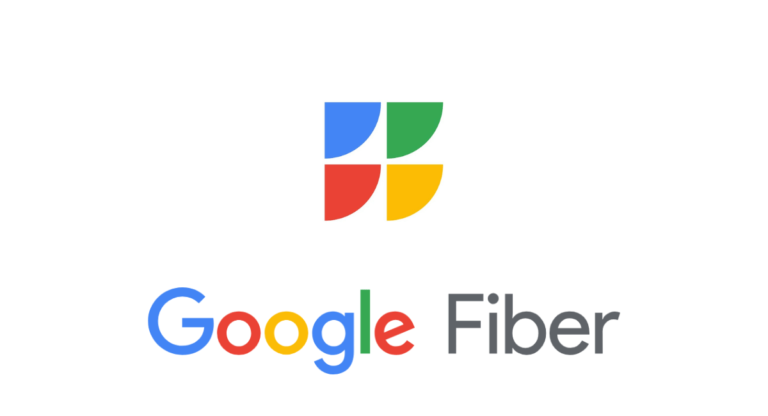What Is Fiber Optic Internet? – [In Brief]
Fiber optic internet, commonly known as fiber internet, is a high-speed internet connection that utilizes fiber optic cables to transmit data at incredibly fast speeds.
Unlike traditional internet connections that use copper wires, fiber optic internet relies on thin strands of glass or plastic, known as optical fibers, to carry data as pulses of light.

Fiber optic internet is a type of broadband internet that uses fiber optic cables to transmit data.
Fiber optic cables are made of glass or plastic and are able to transmit data at very high speeds. This makes fiber optic internet ideal for activities that require a lot of bandwidth, such as streaming video, gaming, and downloading large files.
Here are some key features and benefits of fiber optic internet:
Benefits of Fiber Optic Internet
- Fast speeds: Fiber optic internet can offer speeds of up to 10 Gbps, which is much faster than traditional cable or DSL internet.
- Low latency: Latency is the time it takes for data to travel from one point to another. Fiber optic internet has very low latency, which means that you will experience very little lag when gaming or streaming video.
- Reliability: Fiber optic internet is very reliable and is less likely to be affected by weather or other environmental factors.
- Security: Fiber optic internet is more secure than traditional cable or DSL internet because it is difficult to tap into.
If you are looking for a fast, reliable, and secure internet connection, then fiber optic internet is a great option.
While fiber optic internet offers numerous benefits, it also has some drawbacks and limitations. Here are some of the main drawbacks of fiber optic internet:
Drawbacks of Fiber Optic Internet
- Not available everywhere: Fiber optic internet is not available everywhere. You will need to check to see if it is available in your area.
- More expensive: Fiber optic internet is typically more expensive than traditional cable or DSL internet.
- Power Dependency: Unlike copper-based internet connections that can carry power to connected devices (e.g., through Power over Ethernet), fiber optic cables do not carry electrical power. As a result, devices connected to fiber optic internet still require separate power sources, which may add complexity to certain installations.
- Limited Upload Speed for Some Plans: While fiber optic internet typically offers symmetrical upload and download speeds, some ISPs may offer plans with higher download speeds than upload speeds. This can be a limitation for certain applications or users who require more symmetrical data transmission.
Overall, fiber optic internet is a great option for people who need a fast, reliable, and secure internet connection. However, it is not available everywhere and it is typically more expensive than traditional cable or DSL internet.
What’s The Maximum and Minumum Speed of Fiber Optic Internet?
The speed of fiber optic internet can vary significantly depending on various factors, including the technology used, the infrastructure, the internet service provider (ISP), and the specific plan or package offered.
Generally, fiber optic internet is known for its high-speed capabilities, which can far surpass traditional copper-based internet connections.
Maximum Speed
The maximum speed of fiber optic internet can reach multiple gigabits per second (Gbps) for both download and upload speeds. Some advanced fiber optic networks can provide speeds of 10 Gbps or even higher in certain cases.
These ultra-high speeds are well-suited for data-intensive applications, online gaming, 4K/8K video streaming, and other bandwidth-hungry activities.
Minimum Speed
On the other hand, the minimum speed of fiber optic internet typically depends on the lowest-tier plan offered by the ISP in a particular area. This can vary from provider to provider, but even the lowest-tier fiber optic plans tend to offer speeds of at least 100 Mbps (megabits per second) or more (You can also find some plans that start with 10/20 Mbps). Such speeds are still considerably faster than many traditional DSL (ADSL, VDSL) or cable internet plans.
Equipment Needed for Fiber Optic Internet
To set up fiber optic internet in your home or business, you’ll need several pieces of equipment to ensure a reliable and high-speed connection.
The specific equipment required may vary depending on the ISP and the type of fiber optic service they offer, but the essential components typically include:
- Fiber Optic Modem: The fiber optic modem, also known as an Optical Network Terminal (ONT), is a device that converts the optical signals transmitted through the fiber optic cable into electrical signals that can be used by your network devices. It is usually provided by the ISP and is often installed at the point where the fiber line enters your premises.
- Router: A router is necessary to create a local network and enable multiple devices to connect to the internet simultaneously. Some ISPs provide a combined modem-router unit, while others may require you to use a separate router. Ensure that the router you use is compatible with the fiber optic modem and can handle the high-speed data provided by your fiber internet connection.
- Fiber Optic Patch Cable: Also known as an Ethernet patch cable, this is the cable that connects the ONT to your router. The cable terminates with small connectors, such as SC, LC, or ST connectors, on each end, depending on the type of equipment provided by the ISP.
- Ethernet Cables: To connect devices such as computers, smart TVs, gaming consoles, and other network-enabled devices to the router, you’ll need Ethernet cables. These cables transfer data over your local network and are available in various lengths.
- Power Supply: Most fiber optic modems and routers require a power source to operate. Ensure that you have the necessary power adapters and outlets available to power the equipment.
- Network Devices: Of course, you’ll need the devices you want to connect to the internet, such as computers, smartphones, tablets, smart TVs, gaming consoles, and more.
- Optional Equipment: Depending on your specific needs and preferences, you may also consider additional networking equipment like switches, access points (for wireless connectivity), or other devices to enhance your network setup.
Keep in mind that some ISPs provide all the necessary equipment as part of their fiber optic internet installation package such as Google Fiber and Spectrum.
When signing up for fiber optic internet service, check with your ISP to see what equipment they provide and if there are any additional items you may need to purchase or set up on your own.
![What Is Fiber Optic HDMI Cable? – [In Brief]](https://radouane.me/hub/wp-content/uploads/2023/07/Fiber-Optic-HDMI-Cable-768x416.png)

![What Is Fiber Optic Cables? – [In Brief]](https://radouane.me/hub/wp-content/uploads/2023/07/Untitled-design-10-768x416.png)

2 Comments